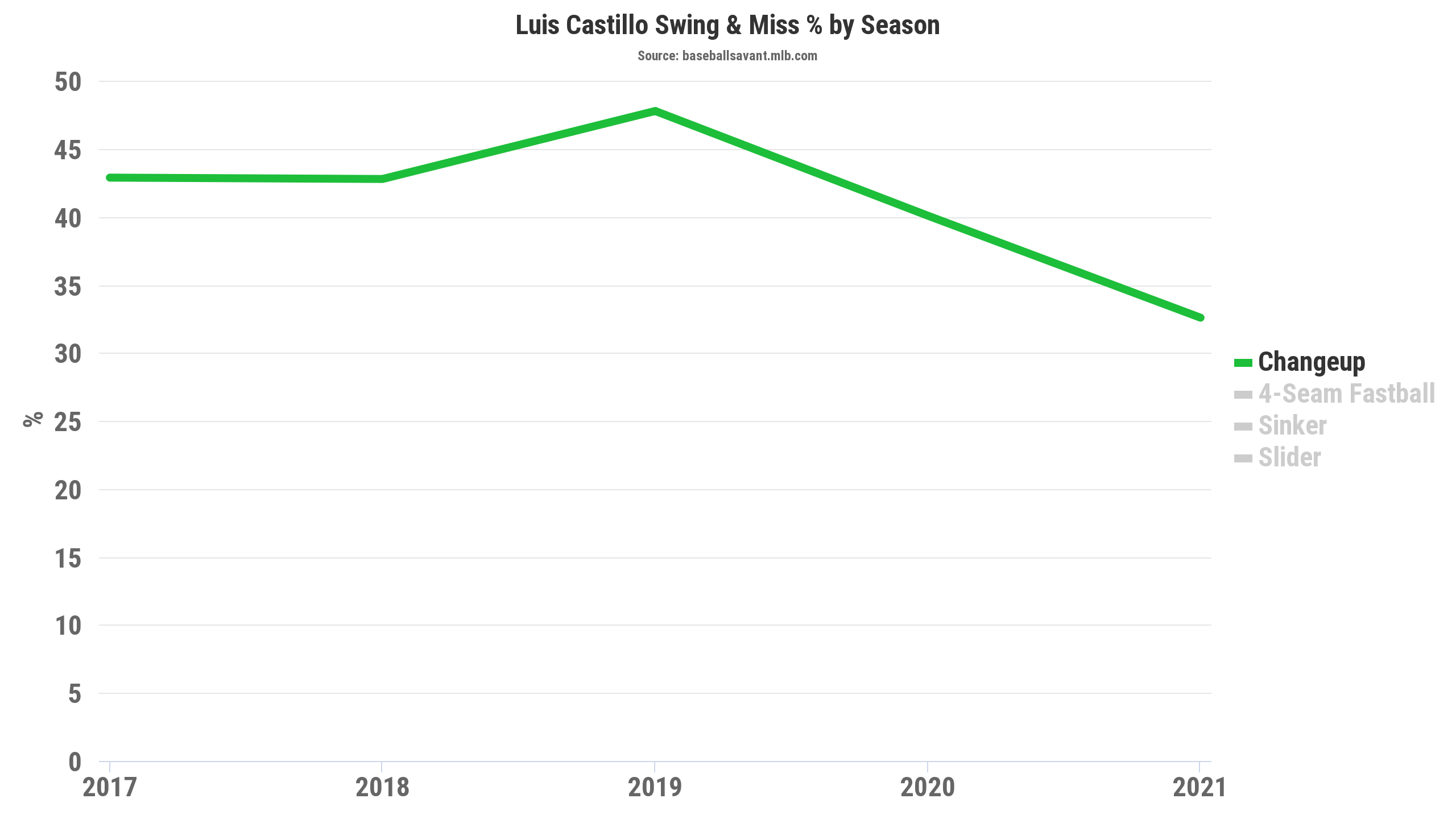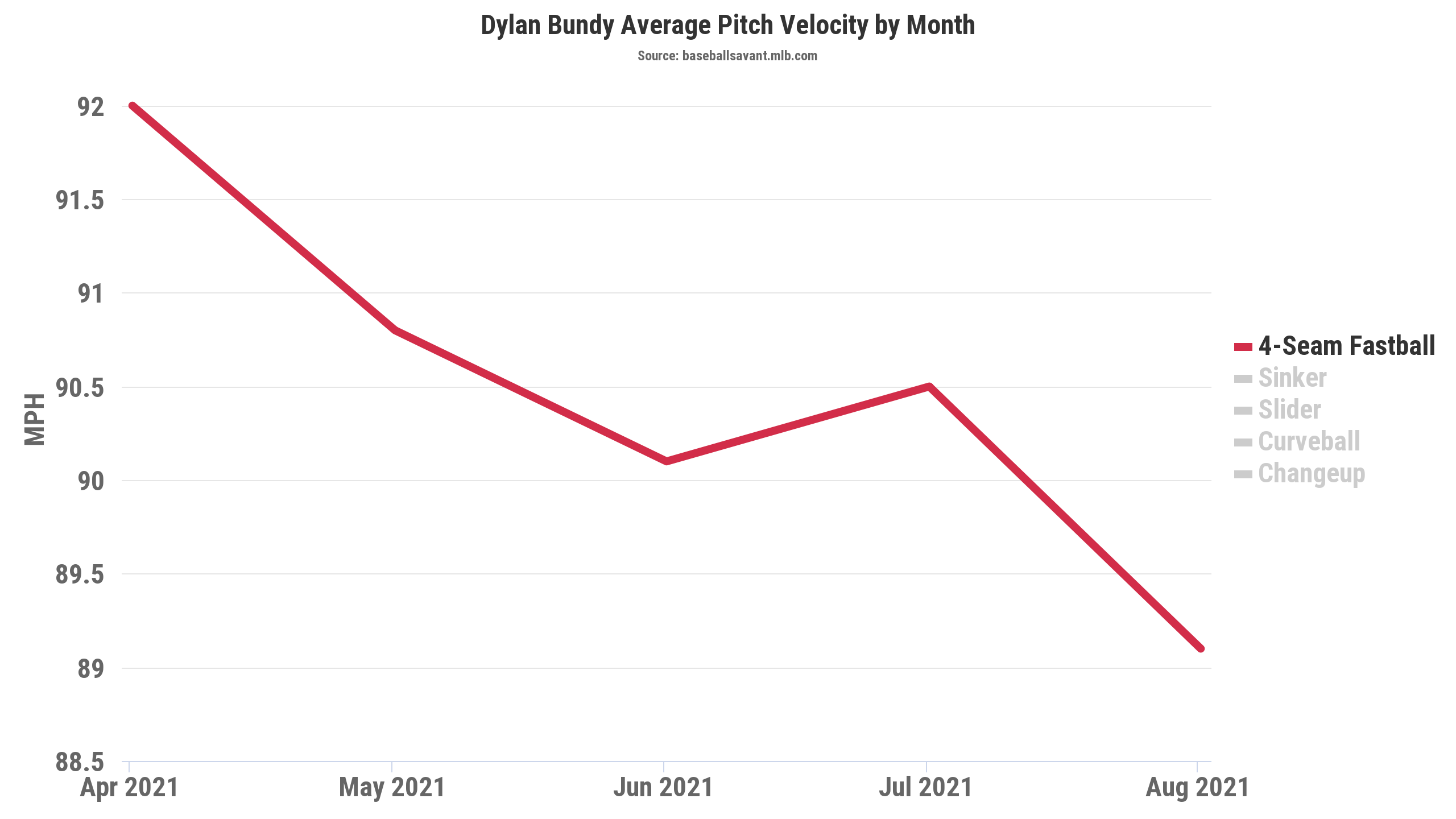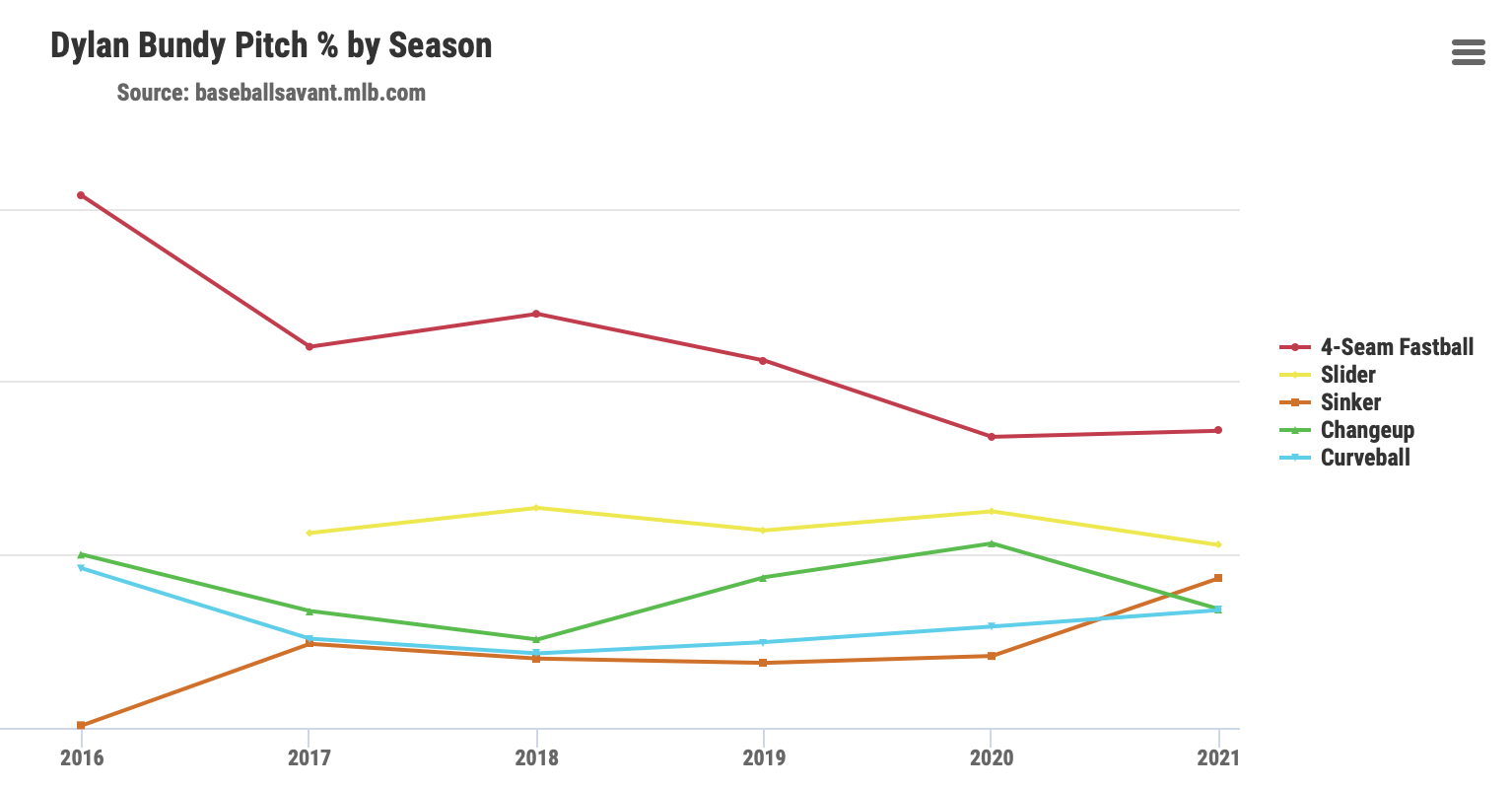Ladies and gentlemen, baseball is back!
With the MLB and MLB Players Association agreeing to a new collective bargaining agreement, the lockout is officially past us, and we are going to have a 162-game season! Suddenly, we have gone from a period of tremendous sadness to a time of extreme excitement. Now, we get to see a free-agent frenzy, while also getting ready for the season; chaos is upon us!
With that in mind, there has never been a better time to completely dive into fantasy baseball prep. Now that the season is set to start on April 7th, fantasy baseball drafts are in full swing, and we’ll have to make last-minute adjustments to the prep that was done during the lockout. With players changing teams and new reports coming in, expect there to be a lot of change in average draft position (ADP) heading up to the season- those who can make adjustments on the fly will be at an advantage.
To assist in preparation, we’ll be going position-by-position, looking for the good, the bad, and the breakout. In other words, one optimal target, a player you should avoid, and a player going past pick #300 in NFBC drafts that can be a true sleeper this year. Today, we’ll be focusing on the starting pitchers. In order to compete and handle the volatility of a long season, you’ll need to have not only a strong pitching staff, but a deep one. Who should you be targeting, and who should you avoid? Let us dive right into it!
Stats via Baseball Savant and Fangraphs
ADP via NFBC Drafts Since February 1st
The “Good”: Kevin Gausman, TOR
2021 Stats (192 IP): 2.84 ERA, 3.00 FIP, 29.3% K, 6.5% BB
ADP: 72.94 (P25)
Honorable Mention(s): Charlie Morton (ATL), Eduardo Rodríguez (DET)
As a former fourth overall pick and top prospect who didn’t quite meet expectations in Baltimore, there seems to be a negative connotation to Kevin Gausman that has made it hard to erase from his profile. In a lot of ways, he’s the Ryan Tannehill of the MLB; you’re always waiting for him to breakout.
Well, the breakout has happened! How did it finally come together? Let me tell the full beautiful story. After posting a 5.72 ERA in 2019 between the Braves and Reds that involved him being moved to the bullpen, he was non-tendered. Despite this, the Giants still paid $9 million for his services prior to the 2020 season, clearly demonstrating their faith in him.
When Gausman was traded from Atlanta to Cincinnati, he was moved to the bullpen, where he posted a 32.9% strikeout rate and 26.8% K-BB ratio. Since he was working shorter stints, he became a two-pitch pitcher (fastball and splitter), and also decreased the usage of the fastball. Per Eno Sarris, upon signing with San Francisco he was instructed to keep this approach. Well, that’s exactly what he did:

As you can see, Gausman threw fewer fastballs combined with more splitters, often misidentified as a changeup, which can explain the 2020 numbers. See, with a 45.9% whiff rate and a .175 weighted on-base average allowed (wOBA) in 2021, Gausman’s splitter has established itself as one of the top pitches in the entire sport. Sometimes, throwing your best pitches more works out!
As a Giant, Gausman finally had that breakout performance, posting a 30% strikeout rate and a 6.5% walk rate. Despite all of this, there seems to be concern about him. One of them is his second-half performance, where he had a 4.42 ERA. That being said, this came with a 27.7% strikeout rate, a 5.9% walk rate, and a 3.51 skill interactive ERA (SIERA), which are strong numbers for someone who “struggled”. Meanwhile, over the final seven starts of the season, he posted a 31.4% strikeout rate, 2.4% walk rate, and a 2.84 SIERA; any concerns that he was “figured out” or couldn’t handle a full-season workload were likely refuted with that stretch.
The main concern with Gausman is his landing spot- the Toronto Blue Jays. While it is not ideal for him to go from arguably the league’s best pitcher’s park to the AL East, we shouldn’t act like Toronto is as bad as a landing spot as it seems. Rogers Centre has generally been a hitter’s park, but a humidor was added for last season. Well, as you’d expect, the park suddenly played much more friendly for pitchers; it was actually had the fifth-lowest total for home runs, per Baseball Savant.
Even when you bake into regression into some of Gausman’s batted-ball data, and even just his overall performance, you have to remember that he’s coming off a season with a 2.81 ERA – there is room for the ERA to come up. With the innings volume he’ll provide and the strikeouts he brings to the table, a 3.50 ERA could have him touching the surface of being a top-10/top-15 starting pitcher. That seems quite reasonable, especially if you believe in the breakout; I don’t see any reason why we shouldn’t, considering there is a clear reason behind it.
Am I worried about him changing teams? Yes, but that regression is already backed into his price, and then some. You should always look to buy players closer to their floor than ceiling, and that’s the case with Gausman. We tend to get fixated on predicting ERA but forget about the other categories. He’ll have a low WHIP based on his low walk rate, will post a lot of strikeouts, and also should be in line for a strong amount of wins with his innings volume while playing for one of the best teams in baseball. If the price was higher, this would be a different story. Yet, here we are!
The “Bad”: Luis Castillo, CIN
2021 Stats (187.2 IP): 3.98 ERA, 3.75 FIP, 23.9% K, 9.3% BB
ADP: 96.84 (P35)
Honorable Mention(s): Dylan Cease (CHW), Pablo López (MIA)
Another potential bias that may exist in fantasy baseball circles is the “FOMO” bias- the fear of missing out on a player. Last season, Luis Castillo was a top-10 starting pitcher drafted in the NFBC Main Event, according to rotoholic.com. After a lackluster season, his stock has certainly dipped, but not enough for him to be a target.
The hype for Castillo was based on a 2020 season in which he had a 30.5% strikeout rate and 3.35 SIERA. This came after posting a 3.40 ERA in 2019, and the expectation was that he’d continue to ascend into an ace in 2021. Instead, the 29-year-old took a step back, posting the second-worst strikeout rate of his career and the highest SIERA (4.03) as well. Now, the question is: will he bounce back.
First off, are we sure this is a case where Castillo is bouncing back? Here are his SIERAs by year:
- 2018: 3.85
- 2019: 3.95
- 2020: 3.35
- 2021: 4.03
Spot the outlier? Of course, that just happened to come in the shortened season, where Castillo also was able to feast on facing two weak divisions (the NL Central and AL Central) exclusively. Still, the 2021 version of Castillo was worse than what we had seen from him pre-2020. His swinging-strike rate dropped to 13.1%, and he struggled to get as much contact outside the zone (56.2%). Inducing chases and getting whiffs outside of the zone was Castillo’s bread and butter between 2019 and 2020, so this is something to keep an eye on.
What caused this? It appears to be tied to the decline of his changeup. It had slightly more vertical drop (1.8 inches above average) than it did previously, and it simply got fewer whiffs than ever:

Even though Castillo’s changeup was better towards the end of the season, it still was a lower-quality pitch than it had been prior to last season. The fact that he never truly got back this elite weapon, nor did he adjust, is concerning and makes me skeptical of him regaining it moving forward.
Although Castillo did perform better as the season went on, it may not have been as elite as you think. From July 1st on, he posted a 3.04 ERA, but his 26.1% strikeout rate and 3.73 SIERA still weren’t ground-breaking for his best stretch of the season. Remember, this is a pitcher who notoriously appears to struggle during the early stretches of the season; if there is any legitimacy to this, it brings more question to his profile.
Plus, until Castillo is traded, he’s in a tough situation. The Reds continue to trade away pieces, and are unlikely to have a strong defense; they were one of the worst last season. That means his BABIP is going to be higher than the average pitcher, while his home runs allowed will be higher than the typical ground-ball heavy pitcher, due to his home ballpark. Simply put, he’s not in a position to succeed.
Plus, ERA isn’t the only category here. Castillo’s WHIP, due to high BABIP and the walks he allows, is projected to hover around the 1.30 area. If his strikeouts don’t rebound considerably, he’s in trouble considering the ERA isn’t strong enough to compensate for the WHIP. Is he an ultra-talented pitcher? Yes. Does that mean it’s going to translate to high-end production? Unfortunately, the answer is a sad “no”. There’s always a chance that “this could be the year”, but you can say that about a lot of pitchers who don’t have the high price that Castillo has. It’s important that we don’t anchor onto our previous hopes of a player, and adjust to the reality of what his true median projection is.
The “Sleeper”: Dylan Bundy, MIN
2021 Stats (90.2 IP): 6.06 ERA, 5.51 FIP, 21.2% K, 8.6% BB
ADP: 457.68 (P162)
Honorable Mention(s): Eric Lauer (MIL), Zach Eflin (PHI)
Trust me, this could age very, very poorly. Or, it could work out well! I guess that’s all opinions turn out. In this case, the hope is that we can find a sleeper late in drafts by fading recency bias.
There’s no other way to put it; Dylan Bundy was one of the worst pitchers in baseball last year. The stats are right there on display, but the crazy part is that this is someone who was drafted as the 37th-best pitcher in the NFBC Main Event, per rotoholic.com. Ironically, there was just a one-point ADP gap between him and Kevin Gausman, who, as we’ve discussed, went on to finish as a top-ten pitcher last season. Long story short, a strong case can be made that Bundy was the greatest bust in fantasy baseball last year.
Last season was uncharacteristically poor for Bundy. His 9.5% swinging-strike rate was more than three points worse than it had been previously, leading to a career-worst strikeout rate. Meanwhile, he struggled more with walks than usual, and also was hit extremely hard (10.3% barrel rate). All told, everything went wrong for him last season.
There may be some context to help explain Bundy’s struggle. One of them is a velocity drop, which suggests he may have been dealing with an injury:

Bundy started at 92 MPH but instantly fell down to 89 MPH by August. Unsurprisingly, he was placed on the injured list with a shoulder injury and did not return. This hasn’t been confirmed, but it’s quite possible this is something he was dealing with for some time. Interestingly, Bundy posted a 27.4% strikeout rate and 3.62 SIERA over the first month of the season; it was after that where his numbers declined significantly.
Maybe we’ll see something closer to Bundy’s April version. Remember, in 2020, the narrative was that he had finally “figured things out” after being traded from the Orioles to the Angels. In 65.2 innings pitched, he had a 27% strikeout rate and a career-best 3.80 SIERA. This may end up being an outlier, but there appeared to be a clear reason behind it. Take a look at Bundy’s pitch mix by year:

Bundy’s two breaking balls, his slider (.234 wOBA allowed) and curveball (.252 wOBA allowed), are strong offerings for him, while his changeup is effective when it comes to getting ground balls. Yet, his fastball (.363 wOBA allowed) and sinker (.402 wOBA allowed) have been the opposite. In 2020, Bundy’s fastball+sinker rate was under 42%, but it reverted back to 51.6%. That’s problematic when it comes to him being optimized properly.
Interestingly, in the first month of the season, Bundy’s fastball+sinker rate was only at 44.6%, while his breaking ball rate was at 39.5%. This is the perfect type of pitch mix for someone with strong off-speed pitches and can help explain the discrepancies between his early performance and the rest of the season’s performance.
Luckily, Bundy may be going to the perfect landing spot in the Twins. As they’ve shown with Kenta Maeda and others, this regime has been strong proponents of increased slider usage and declined fastball usage. In other words, they are a team that is very confident in having him execute the optimal pitch mix. Meanwhile, Target Field has the 10th-lowest park factor for home runs, while the AL Central is favorable both from a competition standpoint and in terms of favorable ballparks. Add in a strong outfield defense, and it’s hard to find a better fit for him.
Bundy disappointed us last year, but he could change things in 2022. There are a lot of extraneous circumstances that affected his performance last season, which was an outlier in many ways compared to previous seasons. Plus, he’s arguably with a more modern-thinking organization for the first time in his career. Add it all together, and you’re getting a pitcher who could easily revert to being an effective middle-of-the-rotation starter. Based on where he’s being drafted, there appears to be too strong of a reaction to 2021.
Photos by Icon Sportswire | Adapted by Doug Carlin (@Bdougals on Twitter)
